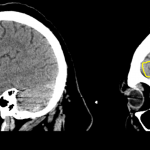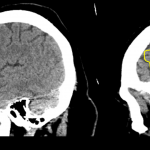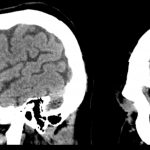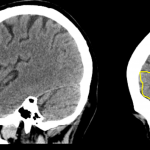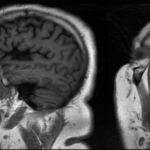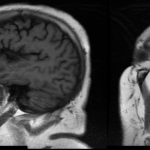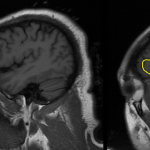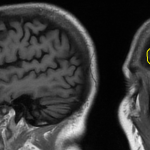OVERVIEW
This page is dedicated to covering how the inferior frontal gyrus will appear across different radiological studies. It is an important anatomical structure in the brain.

APPEARANCE OF THE INFERIOR FRONTAL GYRUS ON SAGITTAL CROSS SECTIONS
The inferior frontal gyrus can be fond on sagittal sections by first identifying the Sylvian fissure on the sagittal view of the brain. By following the Sylvian fissure towards the anterior aspect of the brain, the anterior ascending ramus and anterior horizontal ramus can be identified which serve as borders for the inferior frontal gyrus. The inferior frontal gyrus has a characteristic “M” shape (referred to as the “M” sign) where the anterior ascending ramus and anterior horizontal ramus form the central “V” shape found in the middle of the “M”. The image below helps better demonstrate the M sign and how the Sylvian fissure, anterior ascending ramus, and anterior horizontal ramus can be utilized to identify the inferior frontal gyrus.
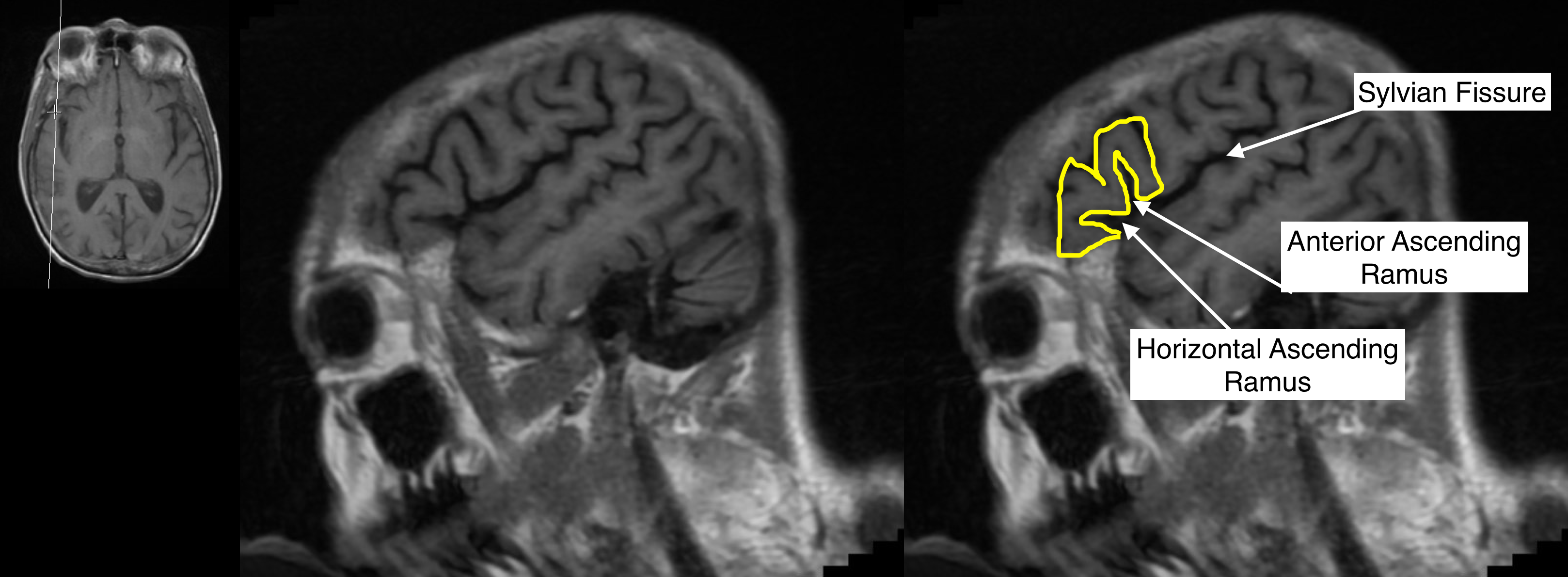
HERE ARE SOME EXAMPLES OF THIS GYRUS SEEN ON A NON-CONTRAST HEAD CT-SCAN (SAGITTAL ORIENTATION). CLICK THE THUMBNAILS TO VIEW THEM.
HERE ARE SOME EXAMPLES OF THIS GYRUS SEEN ON A T1 WEIGHTED HEAD MRI WITHOUT CONTRAST (SAGITTAL ORIENTATION). CLICK THE THUMBNAILS TO VIEW THEM.
ACKNOWLEDGEMENTS
A very special thanks goes to Dr. Pierre Sasson who made this page possible with his expertise and insight.
Page Updated: 12.24.2017
